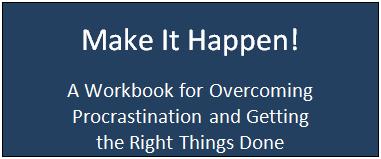
Self-Efficacy is your belief that you’ll be able to accomplish a specific task.
Albert Bandura is widely regarded as one of the most influential psychologists of all time. One of the things he’s best known for is his theory of self-efficacy. Bandura defines self-efficacy as follows:
“[T]he belief in one’s capabilities to organize and execute the courses of action required to manage prospective situations.”
That definition is a bit convoluted, but it can be summed up as the following quote by Henry Ford:
“Whether you think you can or whether you think you can’t, you‘re right.”
Your self-efficacy will determine all of the following:
- How motivated you are to take on a task.
- The amount of effort that you’re willing to put into the achievement of a task.
- For how long you’ll persist in the face of adversity.
- Whether you’ll ultimately succeed at achieving the task.
After all, if you don’t believe you can do something, how likely are you to try? Not likely at all. And if you do try, how much effort will you be willing to exert? How likely are you to keep trying when you come across an obstacle or suffer a setback? You know the answers to these last two questions:
- You won’t put much effort into it.
- You’ll give up at the first sign of trouble.
 The opposite is also true. If you believe that you can do something you’ll be eager to get started, you’ll put in a lot of effort, and it’s highly likely that you’ll persist until you succeed.
The opposite is also true. If you believe that you can do something you’ll be eager to get started, you’ll put in a lot of effort, and it’s highly likely that you’ll persist until you succeed.
Keep in mind that self-efficacy is task and situation-specific. As an illustration, you may have high levels of self-efficacy when it comes to solving math problems; medium levels of self-efficacy when it comes to giving presentations at work; and low levels of self-efficacy when it comes to doing anything athletic.
So, what can you do if you’ve set goals for yourself in an area of your life in which you have low self-efficacy? The answer is simple: you need to work on increasing your self-efficacy. You’ll discover how, below.
How to Increase Your Self-Efficacy
Bandura sets forth that you develop your self-efficacy beliefs based on how you interpret input that you receive from four sources:
- Mastery
- Modeling
- Persuasion
- Physiological Factors
This means that if you want to increase your self-efficacy in any area, you need to find a way to work with these four sources. These sources are discussed in the sections that follow.
1st Source of Self-Efficacy – Mastery
The first source of self-efficacy is mastery. If you’ve done well performing a certain type of task in the past, you’re likely to have a strong belief that you can accomplish that type of task again in the future.
In order to increase this source of self-efficacy, do the following:
- Remember your past successes. Ideally, you’ll have past successes with goals that are similar to the goal that you’re currently working on. However, just remembering how you achieved something that you at first thought was difficult can be helpful.
- Set goals that have an element of challenge in them but that are also realistic and attainable.
- If you’ve failed at a certain type of task in the past, when it comes time to working on that sort of task again, set smaller goals for yourself and work your way up slowly, making sure to recognize even small successes.
- As you work on your goal keep reminding yourself that having some stumbles and setbacks along the way is normal.
2nd Source of Self-Efficacy – Modeling
The second source of self-efficacy is the vicarious experience of observing others perform the task that you want to succeed at. You’re influenced by what you observe others doing.
The caveat here is that—to believe that “if they can do it, I can do it” –you need to perceive that the people whom you see succeeding in achieving the goal that you’re after are similar to you.
Ideally, you’ll be able to find role models—people who have succeeded with the goal that you’re currently pursuing—within your circle of friends or acquaintances. However, you don’t have to know someone—or even be near them—to model them. You can model people by watching them on YouTube, or by reading about their accomplishments on the internet.
The idea is to find someone who will make you think the following: “This person is a lot like me, and they were able to do it. Hey, I bet I can do it too!”
3rd Source of Self-Efficacy – Social Persuasion
Social persuasion is the third source of self-efficacy. What others tell you about your ability to achieve a certain task matters. Look for people who will encourage you to go after your dreams and who will cheer you on as you strive to achieve your goals.
At the same time, stay away from those who try to rain on your parade. People who try to convince you that you don’t have what it takes to achieve your goals will have a negative impact on your self-efficacy.
If you don’t currently have a supportive network, then try daily affirmations and journaling to remind yourself that you can succeed.
4th Source of Self-Efficacy – Physiological Factors
The emotional state that you’re in when it’s time to act on your goals will affect your self-efficacy. But what’s also important is what you tell yourself about you’re feeling.
As an illustration, everyone gets a little nervous when they’re about to try something new. You can interpret this nervousness in the following two ways:
- You can interpret it as a sign of excitement at the prospect of stepping outside of your comfort zone. This excitement will encourage to keep moving forward.
- However, if you interpret the nervousness as anxiety and fear, it’s likely that you’ll conclude that it’s best not to proceed.
Positive moods increase feelings of self-efficacy, while negative moods reduce it. Strive to put yourself in moods that will boost your self-efficacy by managing stress, and by talking yourself through any discomfort you may feel as you strive to achieve your goals.
An Illustration of Self-Efficacy
A high school coach wanted his track team to improve their running times. However, they were having a lot of trouble achieving this goal and they had grown discouraged. They started to believe that no matter how hard they tried, they wouldn’t be able to run faster than they already were.
Then, one day, the coach had an idea. During the night, he moved the finish line by a few yards.
The next day the students were surprised to discover that their running times had gotten worse (because-unbeknownst to them– the distance they were running was now longer). The coach told them: “Come on, guys! You’ve been doing better than this for weeks. What’s going on?”
Each of the team members thought to himself: “Of course I can do better this. I must be having a slow day. I’ll do better tomorrow.”
At the next practice they all pushed themselves really hard. In fact, they tried so hard that they managed to improve their time slightly from the previous day. However, they still weren’t achieving their “best time”. The coach encouraged them to try harder.
In the locker room, all of the team members were telling each other: “We can do better than that. We’ve done it before!”
After a few more practices—in which everyone was giving it their all— they improved their time even more. The coach then confessed to the students what he had done. At first, they were a little upset, but he explained that he had been trying to increase their self-efficacy and they understood that he wanted to help them.
The coach wanted his team to run even faster, so he showed the team a video of the track team from another high school nearby. The other track team was achieving the running time that the coach wanted his team’s members to achieve.
“Look at them,” the coach said. “They’re not bigger than you are, and they don’t have any advantages that you don’t have. If they can do it, so can you!”
A short time later one of the guys on the team managed to achieve the running time that the coach wanted. This inspired the others to try even harder.
The team started taking a few minutes before their runs to take deep breaths and visualize their success. By the end of that month everyone on the team was achieving the running time set by the coach.
They had succeeded in achieving the goal of improving their running times. And how did they succeed in doing this? By increasing their self-efficacy. Look at the following:
- First, they thought that running faster was within their reach because they had done it before (they didn’t realize they were now running a longer distance because the coach had moved the finish line).
- Second, they all encouraged each other to try harder and the coach kept telling them that they could do it.
- Third, they saw a video of students from another high school who were just like them achieving better running times.
- Fourth, they started putting themselves in a positive state of mind before their runs.
Increased self-efficacy goes a long way!
Conclusion
We’ve all read the children’s book “The Little Engine That Could”, in which a little engine succeeds in pulling a long train over a mountain by constantly repeating: “I think I can, I think I can”. Believe that you can achieve your goals. Live your best life by increasing your self-efficacy.





Related Posts:
- How to Apply Design Thinking to Your Life
- Change Your Habits with The Six Sources of Influence Model
- How to Plan Your Perfect Day
- 10 Steps for Guaranteed Goal Achievement
Did you enjoy this article? Subscribe to “Daring to Live Fully” by clicking here and get free updates.




 Marelisa Fabrega is a lawyer and entrepreneur. She holds a Bachelor of Science in Business Administration from Georgetown University in Washington, D.C., as well as a Juris Doctor from the Georgetown University Law Center. You can learn more about her
Marelisa Fabrega is a lawyer and entrepreneur. She holds a Bachelor of Science in Business Administration from Georgetown University in Washington, D.C., as well as a Juris Doctor from the Georgetown University Law Center. You can learn more about her 





